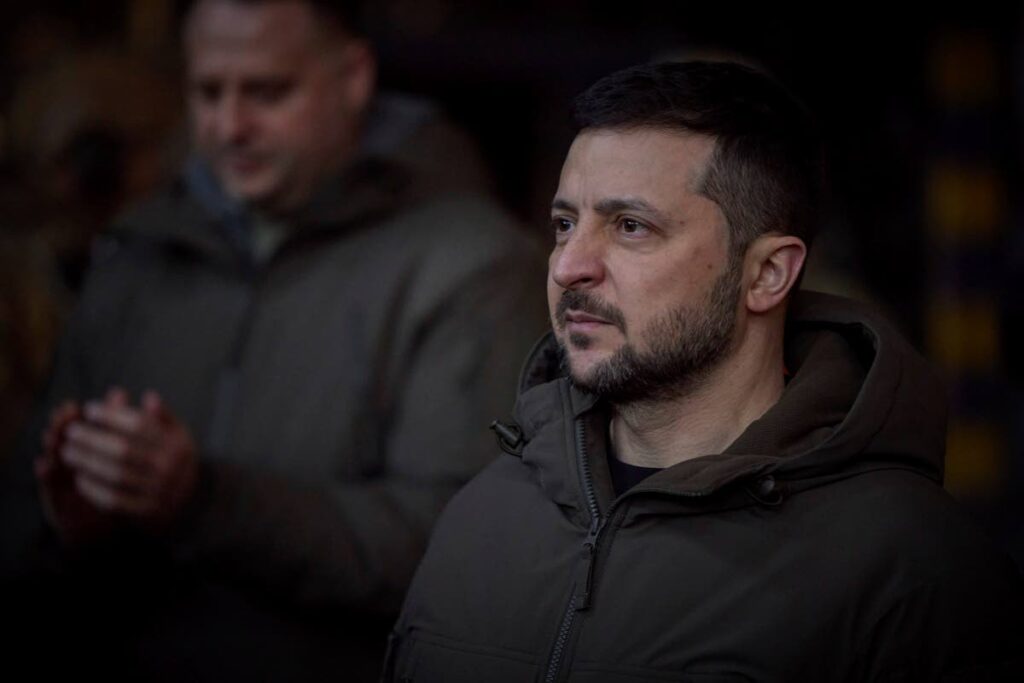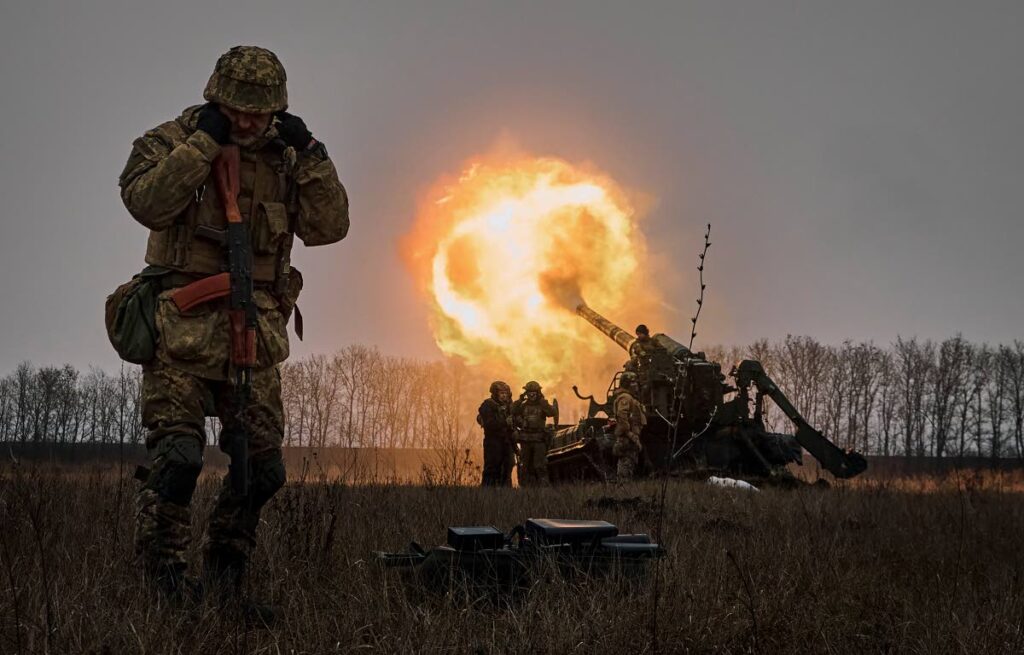The winter campaign

KEVAL MARIMUTHU
THE Russo-Ukrainian War is on its way to becoming the deadliest conflict in Europe since World War II. At the current rate, it will surpass the 140,000+ deaths in the decade-long Yugoslav wars. A US estimate places military losses (killed and wounded in action) at over 200,000 soldiers. This figure does not include the needless and unforgivable deaths of countless civilians.
In economic terms, Ukrainian President Volodymyr Zelenskyy recently stated that one trillion US dollars is required to rebuild his nation. Conservative estimates by Reuters put the figure closer to US$310 billion.
As the conflict enters its tenth month, what initially appeared to be a three-day dash to Kyiv has ground down to a slow, grinding war of attrition. The front lines, with the key exceptions of Kharkiv and Kherson, have remained mostly static. In the Kharkiv region, the Russians positioned themselves on the outskirts of Kharkiv City from the onset of Moscow's "special military operation." In mid-September, realising the hopeless situation, the Russians pulled out of the region. Their advantage in artillery and air power could not compensate for the Ukrainian army's overwhelming numerical superiority.
In early November, Gen Surovikin, commander of Russian forces in Ukraine, ordered the withdrawal from Kherson City. Kherson is one of the four regions annexed by Russia during their "gunpoint referendums" in September. The retreat elicited shock and outrage from the Russian domestic public as Kherson was the largest city captured since the beginning of the invasion in February.
The Kremlin had even installed advertisement billboards in Kherson City boldly proclaiming, "Russia is here, forever." It turns out that forever is less than a year.
The Ukrainian Government heralded Kherson as a significant turning point in the conflict, a capstone for the progress made in the Kharkiv region. To them, it signalled a momentum shift in their favour. It also handed the beleaguered Ukrainian public a much-needed morale boost. The Russians, conversely, gave up a geographically strategic position on the coast to the detriment of their quest to landlock Ukraine. Why did they do this? The answer is two-fold.
Firstly, we must understand that Kherson City lies on the left bank of the Dnieper River. It was Russia's only foothold on that side of the river. Using American-made HIMARS, the Ukrainians destroyed all bridges connecting the Russian-controlled right bank to the city on the left bank. This wreaked havoc on Russia's ability to supply forces on the left side and forced the use of makeshift pontoon bridges.
Secondly, the Russian high command feared the Ukrainians would destroy the Nova Kakhovka Dam situated upriver from Kherson City. The ensuing wave would have completely flooded Kherson City and cut already strained supply lines, leaving over 30,000 Russian soldiers stranded at the mercy of the Ukrainian army. With these reasons in mind, Surovikin ordered the withdrawal.
As previously mentioned, this conflict has morphed into a war of attrition. Meaning the outcome will not be decided by one or two decisive battles. It will depend on the combatants' ability to degrade the opposing army's fighting capability. Russia's retreats from Kherson and Kharkiv were wise tactical decisions. While damaging to Russian pride, Surovikin recognises Russia can retake land but cannot resurrect lives.
Russian manpower currently in Ukraine is vastly inferior to the Ukrainian army's troop count. Estimates place a three-to-one advantage in favour of the defenders. Conventional military wisdom dictates that the attackers must have a three-to-one advantage to be successful. But this logic is based on peer-to-peer conflicts. In almost every other aspect, from economic power, military power, technology and materiel, Russia dominates Ukraine.
The Russian high command is acutely aware of its deficiencies. Their utmost priority is to achieve the special military operation's goals. Ensuring that Ukraine never joins NATO, for Crimea and all other annexed regions to be recognised by the Ukrainian government as Russian territory, and the ambiguous "denazification of Ukraine." Preserving lives is thus of paramount importance. Not because of a particular empathy or compassion for the average soldier. But because the operation's success hinges on it.

The retreats from Kherson and Kharkiv have shortened the front line. In Ukraine's south, the front line mostly runs along the Dnieper River. As one can imagine, it takes much fewer troops to guard the banks of a river, in some areas wider than a kilometre, than it does to defend open fields. The Russians used surplus troops from the shortened lines to reinforce the Zaporizhzhia and Donetsk regions.
In the Zaporizhzhia region, the Russian high command fears the Ukrainian army will attempt to retake the occupied city of Melitopol. If the Ukrainians manage this feat, Russia's land bridge to Crimea will be severed, splitting Russian forces into two and cutting supply lines from the Russian mainland, leaving the Kerch Bridge as the only rail and road connection between Russia and the Crimean peninsula.
In early October, the AFU (Armed Forces of Ukraine) launched an operation that destroyed parts of the Kerch Bridge. The Kremlin has ordered the bridge to be repaired by July 2023.
A successful Ukrainian offensive to Melitopol would shift the balance of power on the battlefield in favour of the AFU, forcing Russia to rely on the already vulnerable Kerch Bridge and seaports to supply troops on the Crimean front. The Russian army's supply network is rail-based. Any shift to sea-based transport would thus be to the detriment of effectiveness, leaving tens of thousands of soldiers in the Crimea area undersupplied and at risk of being overwhelmed by the AFU.
The Russian high command cannot allow this to happen, especially as securing a land bridge to Crimea is one of Putin's main objectives for waging this conflict.
On the Donetsk front, Surovikin is using reinforcements to good effect. The main bulk of the fighting rages in the city of Bakhmut and its surrounding area. Russia appears to be making slow progress in the area. Many military analysts have stated that Bakhmut is the lynchpin of the AFU defensive lines in the Donetsk region and that if it falls, Ukrainian forces will have to retreat to defensive lines in Kramatorsk and Sloviansk, the only major cities left in Donetsk.
The owner of the infamous Russian private military company, the Wagner Group, has described the fighting in Bakhmut as a "meat-grinder." Other commentators have expressed similar sentiments. Trench warfare reminiscent of World War I is occurring. Images emerging from Bakhmut show trenches with dead bodies and soldiers up to their knees in water, surrounded by a hellscape of destroyed infrastructure and shattered trees.
So, what is Ukraine doing with the troops gained from Kharkiv and Kherson? This is where Russia's widely reported and condemned airstrikes on Ukraine's electrical infrastructure comes into play. Within the last month, up to 70 per cent of Ukraine was without power. Ukraine relies on its railway system to transport troops. A large portion of the Ukrainian railway system is electrical. Russia's airstrikes have hampered Kyiv's ability to redeploy soldiers to areas on the front line and have disrupted supply lines which, like Russia's, are mainly rail-based.
Russia is not just targeting electrical infrastructure to delay troop deployments. The Kremlin is waging a vicious campaign to destroy the morale and fighting spirit of the Ukrainian people. December 1 officially marked the beginning of the European winter. Temperatures in Ukraine are currently in the negative Celsius range. The lack of a reliable electrical supply puts hundreds of thousands of people at risk of hypothermia.
So far, the Ukrainians have managed to repair their electrical grid and keep it afloat. But the system is nearing its breaking point. Satellite images show the Russians are amassing bombers in their airfields near Ukraine, preparing for a another devastating strike. Will this be the straw that breaks the camel's back?
There are reportedly upwards of 300,000 troops stationed in Belarus and western Russia. Are the Russians waiting for winter to harden the muddy Ukrainian plains and marshes before they begin a winter offensive? Will we see another use of Belarus as a staging ground for a Russian offensive in northern Ukraine? Only time will tell, but the next few months will be critical in determining the future of this conflict.


Comments
"The winter campaign"